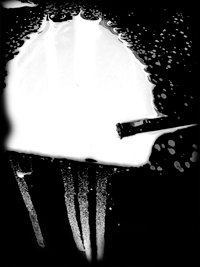

| KONTSEPTSIOON/conception |
| AJAKAVA/schedule |
| WORKSHOPID/workshops |
| AJALUGU/history |
| TOETAJAD/sponsors |
| KONTAKT/contact |

Estonian Arnold Schoenberg Society
Suomen Akatemia
SYMPOSIUM PERFORMANCE & TIME
27.01.2007 11.00 Pärnu, Endla theatre ÄRKLISAAL
lecture
[EE]
Tiina Koivisto
Temporality in Non-Tonal Music: Aspects of Brian Fernyhough’s Rhythmic
Practice
The proposed paper examines the question of rhythm, meter and temporality in
non-tonal music. A special focus is on Brian Ferneyhough’s rhythmic
practice. Ferneyhough’s ways to manipulate the flow of time by means of his
rhythmic practice is illustated with musical examples.
Playing with time: Elliott Carter’s and Brian Ferneyhough’s temporal worlds
In the twentieth- and twenty-first -century music, temporality has become an important compositional resource. This development has arisen from an explicit recognition of the distinction between the “clock time” and experiential time. Composers have incorporated into their compositional practices various rhythmic procedures to shape the listener’s experience of time. In this presentation, I will discuss temporality in non-tonal music, and theories of rhythm and meter. The rhythmic procedures and compositional aesthetics of two contemporary composers, Elliott Carter and Brian Ferneyhough, will be discussed in more detail.
The presentation first provides a short overview of the development of Western rhythmic theories. This overview includes a discussion of the distinction between the concepts of rhythm and meter in tonal music, and the problems that arise from an application of these concepts in non-tonal repertoires. In examining the music of Carter and Ferneyhough, I will illustrate how these two composers have developed their own, different rhythmic idioms, and how these idioms are intimately connected with the composers’ unique pitch and sonic languages. These composers share the concern for an integration of rhythm, meter, and the large-scale shaping of the music. The sense of experiential time is, however, different in Carter’s and Ferneyhough’s music. In Carter’s compositional idiom, a multilayered metric structuring and a coordination of tempo relations contributes to the music’s goal-oriented forward moving motion and to its freely flowing quality. In Ferneyhough’s rhythmic practice, procedures based on impulse densities, tempo relations and metric progressions become vehicles for time to be compressed, distorted, converged and interfered. The discussions of Carter’s and Ferneyhough’s rhythmic idioms are illustrated with musical examples. To conclude, the presentation considers the relation between the compositional techniques, composer’s aesthetic goals, and the listener’s perception.
Information:
  |
|
|||||||||
|
|
Estonian Arnold Schoenberg Society Suomen Akatemia |
||||||||